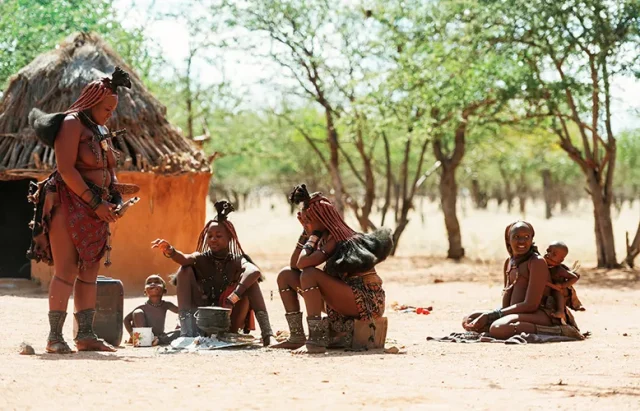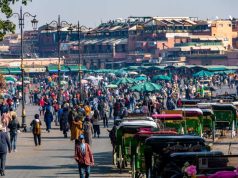
Namibia, a country of breathtaking landscapes and diverse cultures, is home to the Himba people, one of Africa’s most fascinating indigenous groups. The Himba, known for their distinctive red ochre body paint and semi-nomadic lifestyle, have maintained their traditional way of life despite the encroachment of modern civilization.
The Origins and History of the Himba
The Himba are an ethnic group that primarily resides in the Kunene region of northern Namibia. They are descendants of the Herero people, who migrated from Angola several centuries ago. During the late 19th century, many Herero people fled German colonial rule and sought refuge in the harsh, arid environments of northwestern Namibia. The Himba, who chose to stay in these remote areas, developed a unique cultural identity that distinguishes them from other groups in Namibia.
Traditional Lifestyle and Society
The Himba are primarily pastoralists, relying on cattle herding for their livelihood. Livestock, especially cattle and goats, are a significant measure of wealth and social status within their communities. Men are responsible for tending the cattle, while women handle household duties, including food preparation, childcare, and maintaining the family homestead.
A typical Himba Namibia village consists of circular huts made from a mixture of mud, cattle dung, and thatch. These structures provide shelter from the harsh desert environment and are arranged around a central livestock enclosure. The village’s organization reflects the strong communal ties within Himba society.
Distinctive Appearance and Traditions
One of the most striking aspects of the Himba people is their unique appearance. Himba Woman apply a mixture of butterfat and red ochre, known as ‘otjize,’ to their skin and hair. This practice not only protects them from the sun but also enhances their beauty, giving their skin a deep, reddish hue. Hair is styled in intricate braids, often adorned with beads and other decorative elements, indicating a woman’s social status and marital status.
Men typically keep their hair short and cover their heads with a turban-like cloth. Both men and women wear traditional attire made from animal skins, accessorized with handmade jewelry crafted from metal, shells, and beads.
Spiritual Beliefs and Customs
The Himba practice ancestral worship and believe in the presence of spirits that influence their daily lives. They communicate with their ancestors through sacred fire rituals, which play a central role in their spiritual practices. The fire is maintained by the village elder and symbolizes a connection to past generations.
Polygamy is common among the Himba, and marriages are often arranged at a young age. Social structures are based on a complex system of clans, where leadership is passed down through the maternal line.
Challenges and Adaptation
Despite their resilience, the Himba face numerous challenges in the modern era. Climate change has led to prolonged droughts, threatening their cattle-based economy. Additionally, government policies promoting urbanization and education have brought both opportunities and challenges. While some Himba choose to embrace aspects of modern life, many strive to maintain their cultural identity and resist external influences.
Tourism has also played a significant role in their exposure to the outside world. Many travelers visit Himba villages to learn about their customs and purchase traditional crafts. While tourism provides economic benefits, it also raises concerns about cultural exploitation and the need for ethical engagement with indigenous communities.
Preserving the Himba Heritage
Efforts to preserve the Himba culture include community-driven initiatives that promote sustainable tourism, education, and environmental conservation. Many Himba leaders advocate for the protection of their ancestral lands and the right to maintain their traditional lifestyle without external interference.
The Himba people of Namibia stand as a testament to cultural resilience and adaptation. Their deep connection to their heritage and environment allows them to navigate the challenges of modernization while preserving their unique identity. As Namibia continues to develop, finding a balance between tradition and progress will be crucial for the survival of this remarkable community.





